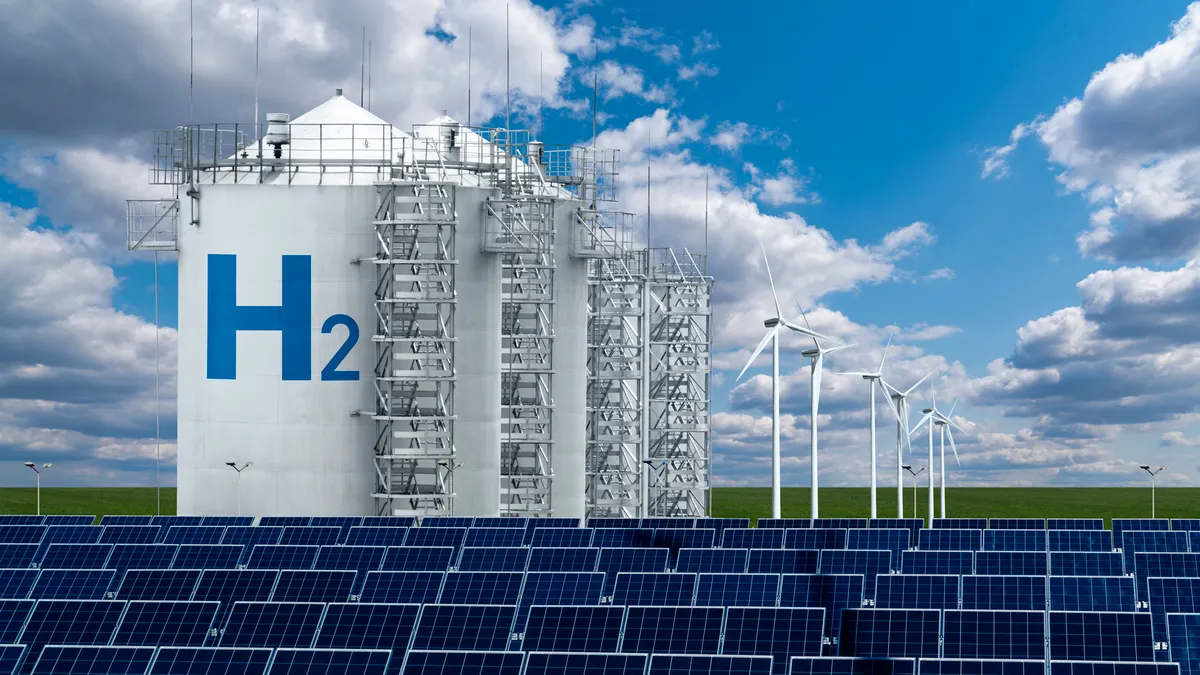Dive Brief:
- Advances in technology could lower the cost of blue hydrogen, derived from natural gas, to $1.33-$1.40 per kilogram by the beginning of the next decade, according to a report released this week by the U.S. Department of Energy 's National Energy Technology Laboratory.
- Baring unforeseen advances, the blue hydrogen sector will fall short of the $1/kg goal established by the DOE in 2021. However, the sale of byproducts could enable blue hydrogen production at or below the DOE price benchmark, according to the report.
- The report closely mirrors independent analysis by Enverus Intelligence Research, which points to the importance of low natural gas prices and government subsidies to achieving $1/kg blue hydrogen.
Dive Insight:
Although the technology to make low-carbon hydrogen from fossil fuels already exists, bringing the cost in line with the DOE's 2021 Earthshot expectations may not be a straightforward venture, according to a pair of cost projections released this week.
The DOE's estimates came in just slightly below independent projections by Enverus — assuming there are no government subsidies for blue hydrogen, which is derived from fossil fuels but paired with technologies like carbon capture to minimize emissions. But both sets of projections exceed the $1/kg goal intended by the DOE to ensure low-carbon hydrogen is cost competitive with other fuels. To hit that benchmark will require subsidies or other measures, according to Alex Nevokshonoff, a senior associate with Enverus Intelligence Research.
“The cost of natural gas alone would account for most of the $1/kg target,” Nevokshonoff said, “Sourcing natural gas from low-cost gas basins will be critical to achieving cost-competitive blue hydrogen, especially as LNG bolsters up gas prices later this decade.”
Moving a blue hydrogen production facility to Missouri, the state with the lowest natural gas prices, could reduce the cost of the final product by about $0.068/kg, according to the DOE report.
The sale of byproducts such as argon or carbon black would have a far greater impact on the price of blue hydrogen — assuming strong markets for these products exist, according to the DOE.
It may be possible to reach $1/kg low carbon hydrogen by pairing carbon capture with steam methane reforming — the most common means of producing hydrogen today, according to the DOE. The application of advanced technologies, such as biological processes that convert biomass or waste into hydrogen, could further reduce costs. However, the DOE analysis concluded that these advanced conversion technologies would release more carbon emissions, even when paired with carbon capture, than steam methane reforming paired with carbon capture.
“Cost and efficiency improvements to both hydrogen production and CO2 capture technologies would support further [cost] reductions, as well as savings from increasing project scale,” Nevokshonoff said. “We note that it will be challenging to achieve similar success across all projects in all locations, recognizing how gas and carbon management resource quality, and therefore cost, vary by location.”
With the addition of government subsidies such as the 45Q tax credit for carbon sequestration, the economic prospects for blue hydrogen improve dramatically — perhaps even outperforming conventional hydrogen produced without carbon capture in certain circumstances, Nevokshonoff said.














